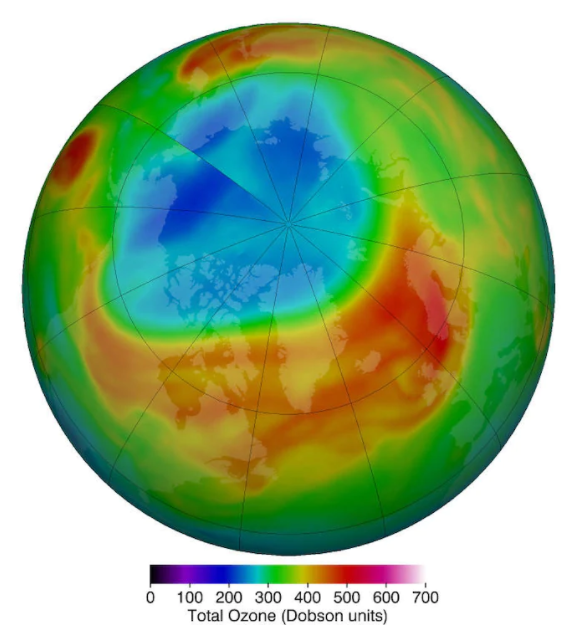
A new paper in Nature Geoscience written by an international team of scientists led by Dr. Luke Western of the National Oceanic and Atmospheric Administration (NOAA) shows that atmospheric abundances and emissions of five chlorofluorocarbons (CFCs) increased between 2010 and 2020, despite the 2010 Montreal Protocol that banned CFC production for dispersive use. Here, dispersive use refers to applications that have the potential to release these compounds to the atmosphere, such as refrigeration, air conditioning, or blowing agents in insulating foam. These five CFCs have no natural sources and long atmospheric lifetimes ranging from 52 to 640 years.
In a News & Views article that accompanied this paper, University of Maryland, College Park Professor Ross Salawitch compared the environmental impact of the inadvertent release of these five CFCs on Earth’s protective ozone layer and climate system against the impact of the continued atmospheric release of CFC-11, a compound whose current production is banned by the Montreal Protocol yet still escapes into the atmosphere from aging prior applications, such as insulating foams. He found that the impact of emissions in 2020 of these five CFCs on the ozone layer was about 9% that of CFC-11, whereas the impact on global warming was about 20% that of CFC-11.
“The very long atmospheric lifetimes of these five CFCs means it is incumbent to precisely identify the cause of their rising atmospheric abundances over the past decade and minimize future emissions,” Salawitch wrote, “Today’s inadvertent releases will have adverse consequences for the ozone layer and climate over the coming decades and centuries.”
Salawitch is a professor in the Department of Atmospheric & Oceanic Science, the Department of Chemistry and Biochemistry, and has an appointment with the Earth System Science Interdisciplinary Center. His research focuses on quantification of the effects of human activity on atmospheric composition, with a focus on the long term protection of the ozone layer.
To access the paper, click here: “Increasing global abundances of five ozone-depleting CFCs from 2010-2020”.
To read the accompanying News & Views authored by Salawitch, click here: “A fly in the ozone and climate ointment”.






